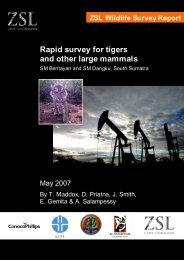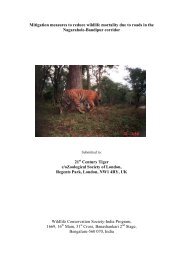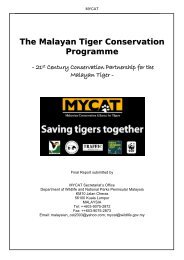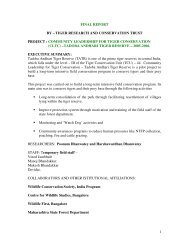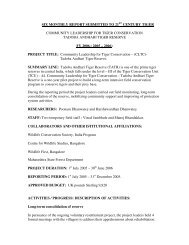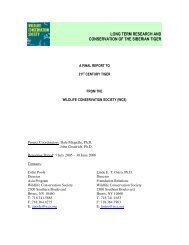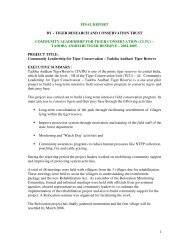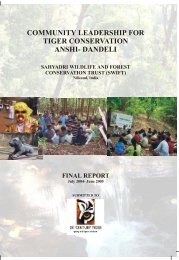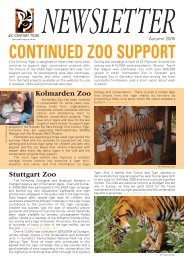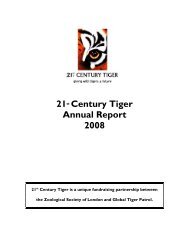The conservation of tigers and other wildlife in oil palm plantations
The conservation of tigers and other wildlife in oil palm plantations
The conservation of tigers and other wildlife in oil palm plantations
Create successful ePaper yourself
Turn your PDF publications into a flip-book with our unique Google optimized e-Paper software.
consumers). Engag<strong>in</strong>g communities on a local level is also essential for br<strong>in</strong>g<strong>in</strong>g<br />
change, rais<strong>in</strong>g awareness on the importance <strong>of</strong> <strong>conservation</strong> success, on the impacts<br />
(<strong>and</strong> legality) <strong>of</strong> hunt<strong>in</strong>g <strong>and</strong> l<strong>and</strong> clearance <strong>and</strong> the potential role people have <strong>in</strong><br />
conserv<strong>in</strong>g their own environment <strong>and</strong> ecosystem services.<br />
F<strong>in</strong>ally, non governmental organisations have to be <strong>in</strong>volved <strong>in</strong> the collaborative<br />
process. Research <strong>in</strong>stitutions <strong>and</strong> universities are required to provide the raw<br />
<strong>in</strong>formation needed for change, lobby<strong>in</strong>g specialists are needed to provide pressure<br />
for change <strong>and</strong> to highlight the failures <strong>and</strong> commend the successes, <strong>and</strong> social<br />
specialists are essential for work with communities.<br />
Protect<strong>in</strong>g what is left<br />
<strong>The</strong> f<strong>in</strong>al step <strong>in</strong> a comprehensive approach to l<strong>and</strong>scape-level <strong>conservation</strong> would be<br />
to protect what is left. Most <strong>wildlife</strong> research is based <strong>in</strong> protected areas where rapid<br />
biodiversity loss is reported almost daily. Outside <strong>conservation</strong> areas the situation is<br />
barely known, but rates <strong>of</strong> loss are assumed to be even faster; data from this report<br />
show how quickly a significant population <strong>of</strong> one <strong>of</strong> Indonesia’s endangered species<br />
can reach local ext<strong>in</strong>ction outside protected areas. Conservation protection <strong>in</strong><br />
Indonesia falls under the remit <strong>of</strong> the PHKA (Perl<strong>in</strong>dungan Hutan dan Konservasi<br />
Alam) with<strong>in</strong> the Department <strong>of</strong> Forestry <strong>and</strong> essentially comprises two approaches:<br />
law enforcement <strong>and</strong> conflict mitigation. However, when considered across the entire<br />
l<strong>and</strong>scape, both are immense tasks <strong>and</strong> require substantial <strong>in</strong>put from external<br />
sources if they are to have any chance <strong>of</strong> success.<br />
56 Wildlife <strong>conservation</strong> <strong>in</strong> <strong>oil</strong> <strong>palm</strong> <strong>plantations</strong>




